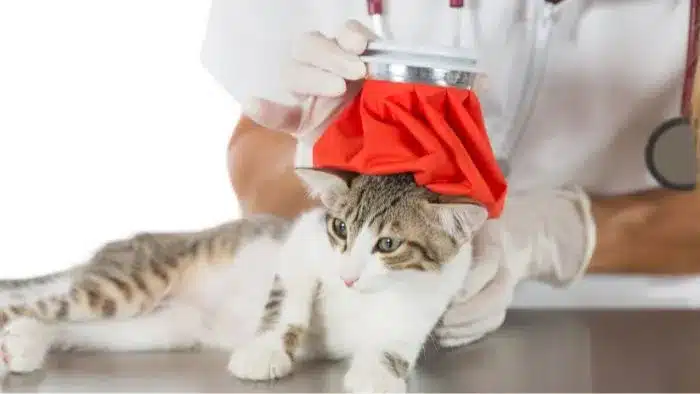Can You Catch a Cold from Your Cat?

Feline viral rhinotracheitis (cat flu) is a common respiratory infection in cats. When a cat starts sneezing or has watery eyes and a runny nose, many owners worry—not just about the cat’s health, but also whether the disease could spread to humans. Thankfully, cat flu has clear species limits. Understanding how Virtus is and how it spreads can help ease unnecessary fear. Here’s what you need to know.
1. The Virus Behind Cat Flu
Feline herpesvirus type 1 (FHV-1) is the primary cause of cat flu. This virus only infects cats and cannot cross the species barrier to humans. It’s adapted to live and multiply only in feline bodies.
Other bacteria, such as Mycoplasma or Chlamydia, may cause secondary infections, but they rarely affect humans. The virus has surface proteins that only match receptors on cat cells, so it can’t enter human cells or cause illness.
In short, cat flu spreads easily among cats (via droplets or contact with discharge), but not to people.
2. Human-Cat Differences
Cats and humans have very different immune systems. Cat respiratory cells are sensitive to FHV-1, allowing the virus to infect and damage their tissue. Human cells, however, don’t support the virus, and our immune cells quickly remove it as a threat.
Even people with weak immune systems—like babies or seniors—are not at risk, because the virus can’t survive in human bodies. There’s no clinical evidence showing cat flu can make people sick.
3. Clinical Evidence
To date, there have been no confirmed cases of cat flu infecting humans. Veterinarians work with sick cats every day and are often exposed to the virus, yet they do not contract it.
Sometimes, people may develop mild skin redness after touching a cat that is sick. This is likely an allergic reaction to proteins in the cat’s saliva or tears, rather than an infection. If someone catches a cold while caring for a sick cat, it is most likely due to a human virus, not cat flu.
4. Daily Care Tips
Even though cat flu doesn’t infect humans, you should still take precautions when caring for a sick cat:
- Keep sick cats separate from healthy ones.
- Use different food bowls, water bowls, and litter boxes.
- Wear gloves when cleaning eye or nose discharge and wash your hands after.
Clean the environment regularly using chlorine-based disinfectants. Wash cat bedding and toys with hot water to reduce the virus in the surroundings, as it can live for days on surfaces.
People with asthma or allergies should wear a mask when handling sick cats to avoid irritation.
Reminder: Cat flu doesn’t infect humans but can be serious for kittens or immune-compromised cats. If your cat shows symptoms, take them to the vet early for treatment with antivirals or antibiotics, and provide extra nutrition to support recovery.
